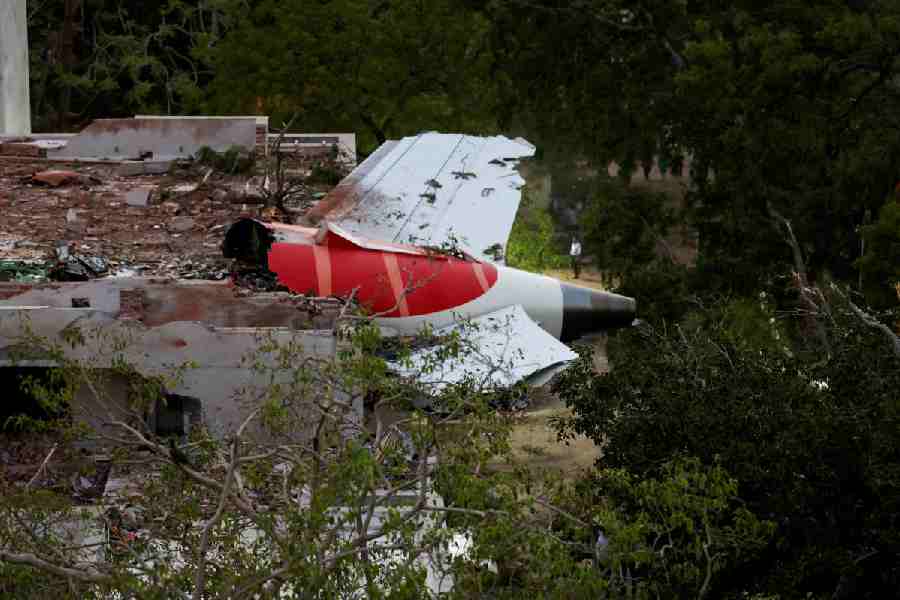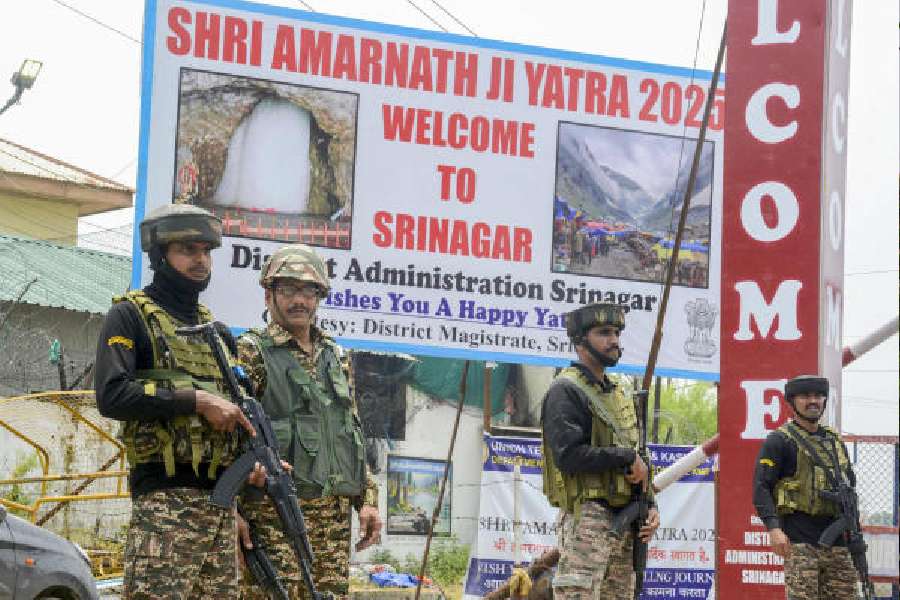 |
| Geologists study rocks in Chitradurga with evidence of glaciation and a mystery ice age 2.7 billion years ago |
New Delhi, Feb. 23: Geologists studying ancient rocks in southern India have detected telltale signatures of a period of extreme cold and glaciation about 2.7 billion years ago, evidence for a long-speculated ice age in the earth’s early history.
The signatures on the rocks in Karnataka’s Chitradurga district make up the earliest evidence for glaciation in the Indian subcontinent, although similar glaciation has been documented in the past in rocks from South Africa and in Montana in the US.
The sun was about 30 per cent cooler during the Archean era than in the present-day, and scientists have speculated for decades that the lower solar radiation could have triggered a worldwide ice age. But evidence for Archean glaciation has been sparse. And the earth’s atmosphere at the time was rich in heat-trapping greenhouse gases — from volcanic activity — that could have blocked any large-scale glaciation.
“The rocks in Karnataka establish a new site for Archean glaciation,” said Ramaswamiah Srinivasan, a senior scientist at the Indian Institute of Science, Bangalore, who was a member of the team that studied the set of rocks named the Talya conglomerate.
The scientists have documented several physical signatures — such as friction marks and flattened surfaces — on the Talya rocks left behind by the glacial ice that appears to have formed on land and drained in a sea some distance away.
The 543-metre thickness of the Talya rocks suggests the glacial period lasted about 118,000 years. The scientists described their findings earlier this month in Current Science, a research journal published by the Indian Academy of Sciences.
“If the glaciation in Montana and Karnataka had the same cause, we have evidence of something unusual on a global scale,” said Venkatraman Hegde, a geologist at the Shri Dharmasthala Manjunatheshwara College of Engineering, Dharwad, and team member.
The study, led by geologist Richard Ojakangas at the University of Minnesota in the US, has also detected evidence for “dropstones” — boulders and pebbles piggybacking in icebergs dropping to the bottom when the ice melts.
The Talya rocks appear contemporary to the glacial rocks in Montana, both sets of stones about 2.7 billion years old. “The Talya may be a step forward in resolving the mystery of this 2.7-billion-year-old glaciation episode on earth,” Abhijit Basu, a professor of geology at the Indiana University in the US, who was not associated with the studies of the Talya rocks, told The Telegraph.
But Basu cautioned that while both the Karnataka and the Montana glacial rocks appear about 2.7 billion years old, it is not clear yet whether they occurred simultaneously — or were close enough in time to have shared a cause.
“Consider two 20th century persons, one born in 1901, the other in 1999,” Basu said. “It would be pure speculation, attractive as it might be, to imagine that the earth was globally covered by snow at the time.”
The glacial rocks from South Africa are the earliest known, dated to about 2.9 billion years. The rocks in Talya and Montana would then represent the second earliest of known glacial events on the earth.
The Talya findings also vindicate the claims of an Indian geologist, Sampige Srikantia, who had three decades ago challenged conventional wisdom, suggesting the presence of glacial rocks in Karnataka. But his ideas had been largely ignored.
“It is a pleasure for a scientist to learn that an idea proposed has been confirmed,” Srikantia, 78, a former scientist with the Geological Survey of India, told this newspaper.
The geologists plan to follow up these findings through two lines of studies — one will seek to determine India’s position on the planet during the Archean era, the other will compare the glacial rocks in Karnataka with those in Montana.










